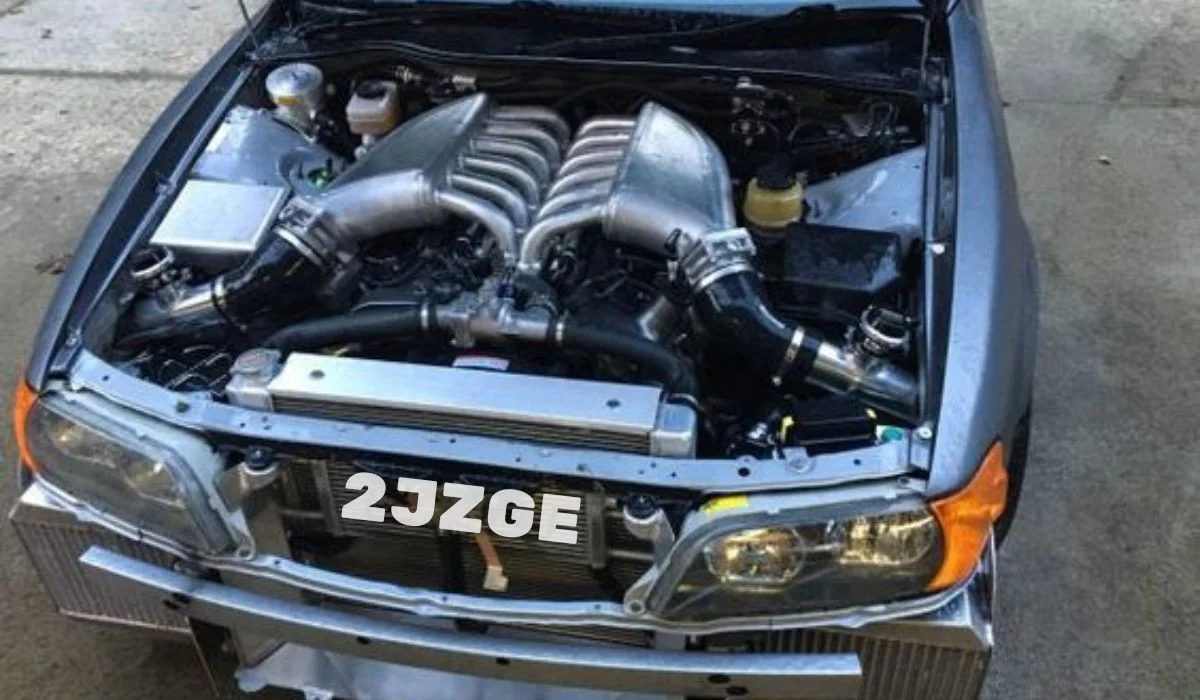The Toyota 2JZGE engine has earned a place in automotive history as one of the most reliable and robust naturally aspirated engines. Whether you’re an auto enthusiast, a mechanic, or simply curious about this piece of machinery, the 2JZGE holds a reputation for durability, versatility, and power potential. Let’s explore what makes the 2JZGE engine so iconic and why it remains a favorite in the car community today.
Overview of the Toyota JZ Engine Family
The Roots of the JZ Series
The JZ engine family, developed by Toyota in the early 1990s, was built to replace the aging M-series engines. Known for their high-performance inline-6 configuration, the JZ engines quickly became synonymous with power and reliability. Over time, they were deployed in some of Toyota’s most famous sports cars and luxury sedans, making them a legendary series in the automotive world.
Trending: Understanding the K24 Propane Idle Circuit : A Comprehensive Guide
Variations in the JZ Engine Family
There are two main variants in the JZ engine family: the 1JZ and the 2JZ. While the 1JZ engines were initially designed for smaller cars, the 2JZ was built for larger vehicles and boasted improved displacement and performance. The 2JZ engine was then further divided into the naturally aspirated 2JZGE and the turbocharged 2JZGTE, each tailored for specific performance needs.
What Is the 2JZGE?
Defining the 2JZGE Engine
The 2JZGE is a naturally aspirated, inline-6 engine with a 3.0L displacement. This engine belongs to the broader JZ family but distinguishes itself by its simplicity and reliability. Unlike its turbocharged sibling, the 2JZGE doesn’t rely on forced induction to generate power, instead using its naturally aspirated configuration to deliver a smooth and responsive driving experience.
Importance in Automotive History
Despite being overshadowed by the 2JZGTE in terms of raw power, the 2JZGE has carved out its niche in the market. Its availability in various Toyota models, coupled with its tuning potential, has made it a favorite among enthusiasts looking for a reliable and modifiable engine platform.
Specifications of the 2JZGE Engine
Engine Architecture and Design
The 2JZGE features a robust inline-6 configuration, which is well-known for its balanced performance and durability. Inline engines tend to produce smoother power delivery due to the even spacing of their cylinders, and the 2JZGE is no exception.
Displacement and Bore/Stroke Ratios
This engine comes with a 2997cc displacement, achieved through a bore of 86mm and a stroke of 86mm. These perfectly square dimensions are one of the factors contributing to the engine’s balanced performance, enabling both high-revving capabilities and reliable torque generation at lower RPMs.
Performance Characteristics
Horsepower and Torque Ratings
In stock form, it produces approximately 220 horsepower and 210 lb-ft of torque, which is respectable for a naturally aspirated 3.0L engine. While it doesn’t deliver the jaw-dropping numbers of its turbocharged sibling, the engine’s linear power curve makes it ideal for smooth daily driving or mild performance builds.
You Might Also Like: Vortec MAX : The High-Performance 6.0L Engine Unveiled
Fuel Efficiency
For an engine built in the 1990s, it offers decent fuel efficiency. Depending on the vehicle and driving conditions, owners can expect around 20–25 MPG, making it a reasonable option for daily commuting, especially when compared to turbocharged or V8 alternatives.
Notable Applications of the 2JZGE Engine
Toyota Models Equipped with the 2JZGE
Toyota Supra
Perhaps the most famous application of it was in the Toyota Supra MKIV (1993-2002). While the turbocharged 2JZ-GTE variant often steals the spotlight, the naturally aspirated version was more affordable and accessible to a broader market.
Toyota Aristo
Another popular model to feature its engine was the Toyota Aristo, known in other markets as the Lexus GS300. This luxury sedan paired the smooth performance of it with an elegant and comfortable driving experience, cementing its popularity in various markets.
Other Lesser-Known Models
Beyond the Supra and Aristo, it found its way into several other Toyota models, including the Soarer and the Crown. These vehicles offered a blend of performance and luxury, making it a versatile engine for a range of applications.
Differences Between 2JZGE and 2JZ-GTE
Naturally Aspirated vs Turbocharged
The most significant difference between it and 2JZ-GTE engines is their method of power delivery. While it relies solely on atmospheric pressure, the naturally aspirated 2JZ-GTE uses twin turbochargers to boost power output significantly.
Key Performance Differences
The 2JZ-GTE can generate over 276 horsepower in its stock form (and much more with modifications), whereas it maxes out at around 220 horsepower. This makes the 2JZ-GTE the go-to option for those seeking maximum performance.
Design Modifications in the 2JZ-GTE
The 2JZ-GTE has reinforced internals, lower compression ratios, and a more complex cooling system, all designed to handle the additional stress that comes with turbocharging. These enhancements make it better suited for high-performance applications, while it focuses more on durability and simplicity.
Modifying the 2JZGE Engine
Popular Performance Upgrades
Though it may lack forced induction, you can still modify it to deliver respectable power gains. Popular upgrades include high-flow exhaust systems, cold air intakes, and ECU tuning, all of which can improve performance without sacrificing reliability.
Tuning for Increased Power
With the right tuning and supporting modifications, many enthusiasts have successfully extracted over 300 horsepower from it, proving that this engine is far from being underpowered.
Boosting the 2JZGE: Turbocharging Options
For those seeking more power, turbocharging it is a viable option. Many aftermarket kits are available, allowing owners to add forced induction to their naturally aspirated engine, essentially transforming it into a 2JZ-GTE in terms of performance.
Turbo Kits and Installations
Turbo kits for it often include everything needed to add boost, from the turbocharger itself to upgraded fuel systems and intercoolers. However, you must ensure proper preparation of the engine for the added stress that comes with turbocharging.
The 2JZGE Turbo Swap Trend
A popular trend among car enthusiasts is swapping it for a turbocharged setup. This cost-effective method provides a significant power boost without needing a full engine swap, making it a favorite among tuners.
Reliability of the 2JZGE Engine
Longevity and Durability
One of the main reasons for its popularity is its legendary reliability. Well-maintained engines have often surpassed 200,000 miles with minimal issues. This longevity is a testament to Toyota’s engineering prowess.
High-Mileage Examples
High-mileage examples of it often still perform admirably, thanks to the engine’s robust design. Regular oil changes, coolant flushes, and routine maintenance help keep these engines running for decades.
Routine Maintenance Recommendations
To ensure the longevity of it, it’s essential to follow a regular maintenance schedule. Key areas to focus on include oil changes, timing belt replacements, and cooling system checks, all of which are critical for keeping the engine in top condition.
Also Visit: The Nissan K24 Propane Pressure Sensor : A Comprehensive Guide
Why the 2JZGE is a Favorite Among Car Enthusiasts
Legendary Status in Tuning Culture
Even though it lacks turbochargers, it remains a favorite among car enthusiasts due to its reliability and modifiability. Its strong internals and forgiving nature make it an excellent platform for tuning, whether you’re aiming for a street build or a track-focused machine.
The Drift and Drag Scene
It has found a home in the drifting and drag racing scenes, thanks to its smooth power delivery and ease of modification. Drivers appreciate its ability to handle high RPMs and maintain consistent performance under stress.
Street Racing Legacy
Street racing culture often sees it as an affordable alternative to other high-performance engines, offering a balance between cost and power potential.
Affordability Compared to Other Performance Engines
Compared to other performance engines like the RB26 or LS-series V8s, it is relatively affordable, especially in the used market. This accessibility has contributed to its widespread popularity in both the tuner community and beyond.
Conclusion
The 2JZGE engine may not have the turbocharged fury of its sibling, the 2JZ-GTE, but it has earned its place as a reliable, durable, and modifiable engine platform. Whether you’re looking to maintain a stock vehicle, or you’re planning an extensive modification project, it offers a solid foundation. Its place in automotive history is well-deserved, and car enthusiasts continue to favor it for good reason.
FAQs
Is the 2JZGE engine good for daily driving?
People know the 2JZGE for its reliability and smooth power delivery, making it an excellent choice for daily driving.
How much power can the 2JZGE handle with a turbo?
The 2JZGE, when properly modified and tuned, can reach up to 400 horsepower when turbocharged.
Can the 2JZGE be swapped into other cars?
Yes, the 2JZGE is a popular engine for swaps due to its durability and aftermarket support.
What is the difference between the 1JZ and 2JZ engines?
The 2JZ is a more robust vehicle, offering a displacement of 3.0L compared to the 1JZ’s 2.5L, making it ideal for modified applications.
How reliable is the 2JZGE compared to modern engines?
As long as you properly maintain it, the 2JZGE remains incredibly reliable, even by modern standards.




